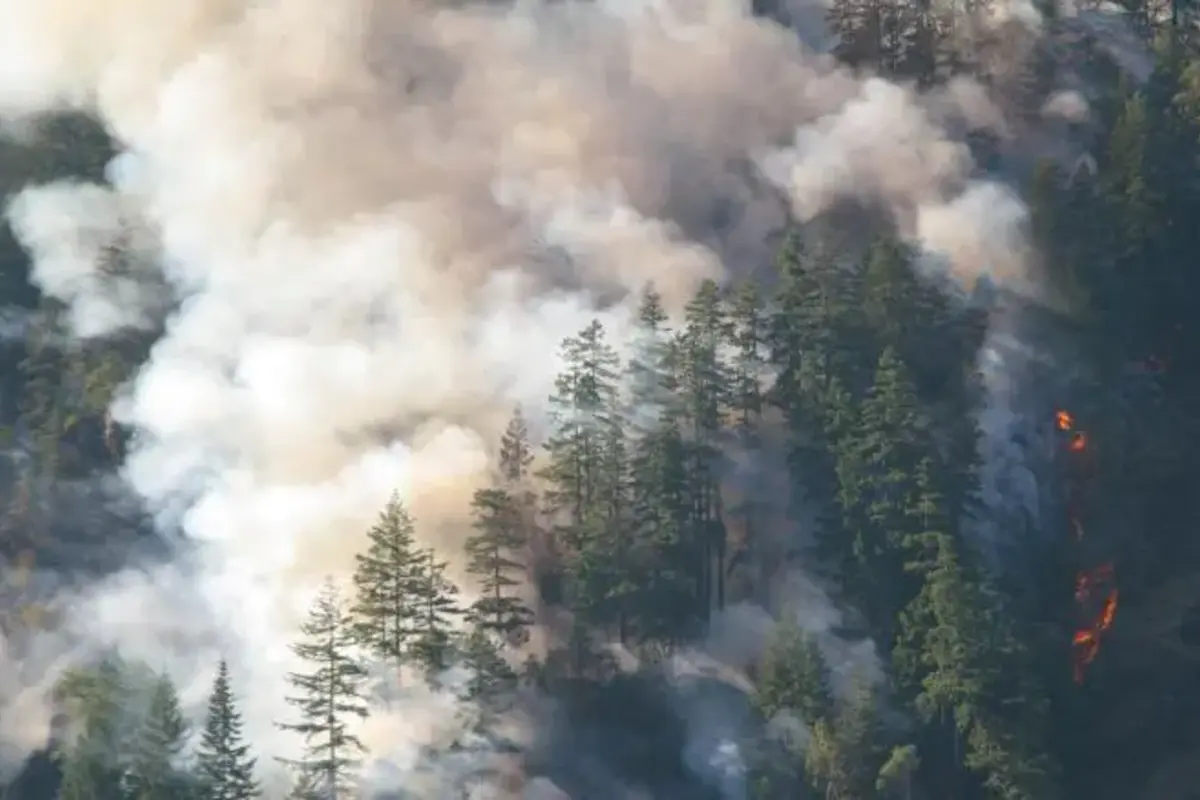
A rich orange-brown sun shone through the foggy sky as smoke from Canadian wildfires spread across North America and beyond, choking millions of people and prompting severe air quality alerts.
As of Wednesday, more than eight million hectares (20 million acres) of forests and grasslands had burned across Canada, exceeding the 1989 yearly record of 7.3 million hectares.
And Canada has yet to reach the peak of the fire season, which generally occurs in July or August.
A fire specialist for the Canadian Ministry of Natural Resources, Yan Boulanger said, “We have a fire in northern Quebec which currently covers 700,000 hectares, for example. It’s hard to fathom just how big it is”.
A hot, dry spring created a significant fuel load in Canada’s boreal forest, resulting in desiccated vegetation and dead branches.
According to Jack Chen of Canada’s environment ministry, smoldering humus fires that can burn deep below emit a lot of smoke, resulting in higher carbon monoxide emissions.
Because the boreal forest emits 10 to 20 times more carbon per unit of area burned than other ecosystems, the climate repercussions are disastrous.
The Copernicus Atmosphere Monitoring Service (CAMS) reported that hundreds of forest fires have burned roughly 600 million tonnes of carbon dioxide since early May, accounting for 88 percent of the country’s total greenhouse gas emissions from all sources in 2021.
Wildfire smoke is more toxic than other types of smoke and, as a result, can be more hazardous to human health than other sources of air pollution.
Because the particles are tiny, they can penetrate deep into the respiratory tract.
According to experts and officials, smoke from forest fires is a hazard to everyone since it contains ozone, sulphur dioxide, nitrogen dioxide, carbon monoxide, volatile organic compounds, and PM2.5 fine particles.
However, the Canadian government has warned that it is especially risky for young children, pregnant women, smokers, seniors, and people with chronic health conditions.
An emergency room doctor in Yellowknife in Canada’s Northwest Territories, Courtney Howard said, “The particles are so small, particularly the ultra-fine ones, that they can get all the way down into your lungs and then cross over into your bloodstream and lead to inflammation”.
He further said, “It also can have direct consequences on mental health, mood, and anxiety”.
Also read: King Charles’ First Year On The Throne: Royally Expensive
To read more such news, download Bharat Express news apps


















